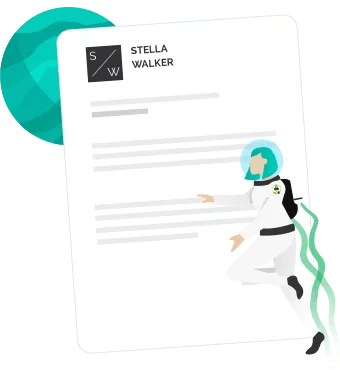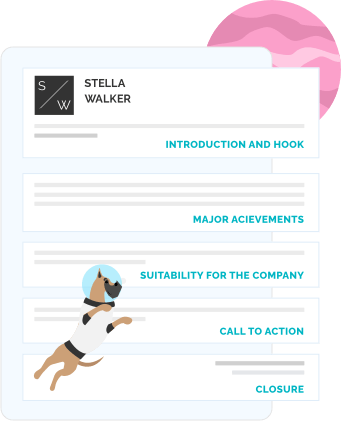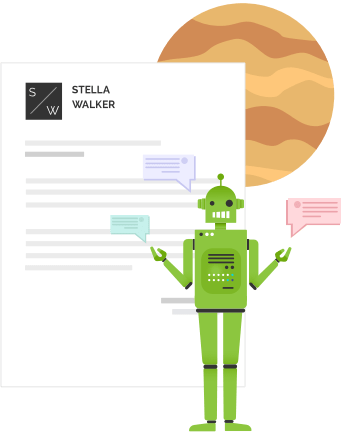There are many benefits to using an industry-specific cover letter example to help you create a cover letter that is perfect for your next job application. While it can seem strange to look at someone else’s cover letter in order to get inspiration for your own, this is actually a great way to get ideas and help you to think outside of the box. Some of the biggest benefits of looking at cover letter examples are:
If you get stuck, then you can look to your chosen examples to help address whatever has you stumped.
Good cover letter samples will give you ideas as to how you can best display your own unique talents and skill set in ways that can catch a hiring manager's attention.
The cover letter examples you’ll find on ResumeNerd are all cover letters that have worked well for the job seekers who created them.
If you are new to an industry, then you can use example cover letters to get a good idea of the kinds of achievements, skills, and qualifications that are most common for this industry. You will also be able to see what kinds of cover letter designs are preferable. For example, if most of the cover letter examples you see have creative designs, then it means you can create a cover letter for the job that is a little more colorful.
Your cover letter is the human face of your resume. If you write a great cover letter, then it should supplement your resume, provide extra information, and give employers an idea of your personality.
So, as you can see, there are many benefits to choosing professional cover letter examples to consider. If you want more support during the process of writing your cover letter, then ResumeNerd has excellent resources that explain how to write an effective cover letter.


Though the cover letter examples found online will all have unique and distinct features, they will also follow the same basic structure in most cases (as will most cover letter templates). This is because there are only a few ways to put together an effective cover letter - so, whether you are writing a cover letter for an entry-level healthcare position or a human resources position in management, your basic cover letter format should look like this:
Include your full name, your phone number, and other contact information at the top of your cover letter. You could also include your professional portfolio details (such as your LinkedIn profile link). This ensures that recruiters have all the information they need to contact you if they want to arrange an interview. Underneath, enter your salutation. Opt for something professional and specific; refer to the hiring manager by name if you can. This is more personal than writing “to whom it may concern” or “dear hiring manager”.
The opening paragraph should contain a summary of your biggest relevant achievements and some details as to how you accomplished them. Mirror some of the language from the job ad in your first paragraph in terms of key skills and abilities to catch the hiring manager's attention.
The second paragraph of any resume should include the company name and job title that you are applying for, as well as an argument as to why you are the perfect candidate for that job. If you can, address how you will fit in with the company culture.
The last paragraph should bring it all together and include a call to action that encourages the recruiter to reach out and arrange a job interview. This paragraph should be followed by a professional sign-off.
If you follow this simple layout and our cover letter samples, you will create an effective, complete cover letter that makes a good first impression. You can also use ResumeNerd’s cover letter builder to make this easier. How persuasive that cover letter is will depend on your own achievements, qualifications, and, of course, your writing skills.
Some cover letters are easier to write than others; a career change cover letter can be tricky, for example, especially if the industry a job seeker is entering is vastly different from the one they are leaving. At the most basic level, however, a cover letter is simply an expression of your communication skills, and your ability to relay your most important skills to an employer. Here are some cover letter tips that will help you to land a new job:
The right cover letter is one of the best tools you could have in your job search, so take the time to consider example cover letters in the same way that you would look at resume templates and samples. This will give you the best chance of getting your dream job.

Yes, a good cover letter is one of the best tools that job seekers have in their arsenal. Furthermore, companies expect a cover letter to come with every resume so unless a potential employer states otherwise, you should include one.
You can write a generic cover letter to act as a base, but you should always edit your cover letter to reflect the requirements of the job description that you are applying for before each job application. This will increase your chances of impressing a hiring manager.
If you want your cover letter to pass through the applicant tracking systems (ATS) that employers use to scan them, check the job posting and mirror the language that it uses to ensure that you have the right keywords relating to skills and job requirements in place. By using a cover letter example, you’ll also make sure you have a straightforward layout that can be read by ATS.